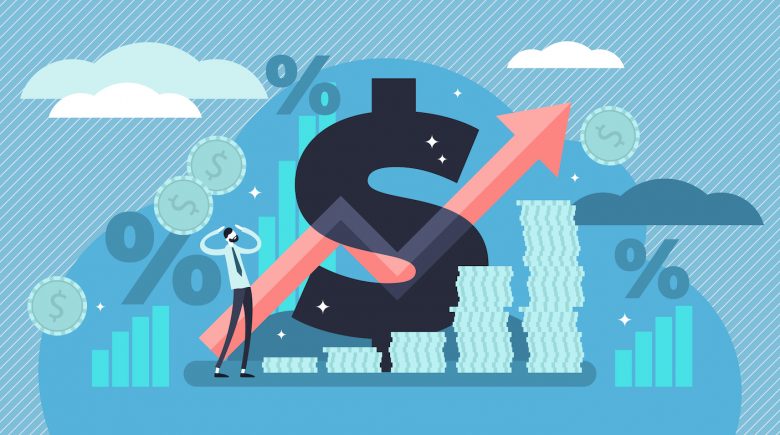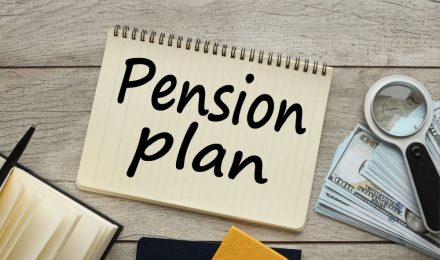Prices change every day. There is a reason for this, and that reason is inflation. Inflation is a good way to balance the economy while protecting the best it has to offer, but what is it?
Inflation Explained
Inflation is a measure of the price levels that rise and fall with the economy. The percentage of inflation is determined by the amount of purchasing power the country has for basic items like milk. The United States dollar increases and decreases as the goods and the services in the economy go up and down in value.
How to understand inflation
Inflation, when tied to goods, goes as the value of the good increases. The rise in price means it will cost more money to buy that good previously purchased at a lower rate. The increase in goods ultimately impacts the local populace as they see their cost of living increasing.
The loss of purchasing power for the common citizen results in a deceleration of economic growth as fewer goods are purchased. If Inflation continues, called sustained inflation, the result is in the money supply growing beyond the pace of the economy. The unit of currency has lost its original value.
What causes inflation?
Rising prices are the main reason for inflation, but there are three different reasons prices rise, and the reasons for their rise vary.
- Built-in Inflation
Rising prices on goods and services result in the demand for higher wages to maintain the cost of living for the employees. To be able to give the workers their higher wage results in the rise in the cost of goods and services in a given area.
- Cost-Push Inflation
Cost-push inflation comes something within the production of the good that goes up in price such as the raw materials to manufacture the item. The increase in the cost of products increases the price of the finished product.
- Demand-Pull Inflation
Demand-pull inflation occurs when the demand for the good increases while the production remains the same. It creates a supply-demand, and the result is higher prices on the item and for the consumer. A good example of this is the “must-have” Christmas toy every year. There is only a certain number manufactured, which results in the demand for the toy being high with the price matching the demand.
An increase in the money supply for the county also leads to inflation. When the average consumer has more money, they usually want to spend it. The demand for more goods with the extra money floating around leads inflation.
More money might be in printing, and additional currency increases can devalue the currency, which results in inflation and a decrease in purchasing power.
Most frequent inflation
Inflation is tract through the different sectors and indexes. The most commonplace for inflation to occur is in the Wholesale Price Index and the Consumer Price Index
- Wholesale Price Index
The Wholesale Price Index tracks the price of goods at the level of production. An example of this is the price of cotton, which, if it goes up, the price for production of cotton clothes will go up in every stage of production and shipping. All people who use cotton to produce any goods are using the Producer Price Index to measure the changes received by the seller and measured by the buyer.
- Consumer Price Index
The consumer price index is the averages for the goods and services the consumer is buying. The types of goods these measures include food, transportation, and medical care. The retail price of each item is calculated from a percentage of the original cost of the item from the seller. Every seller will have its markup, and the consumer price index will change with inflation and deflation of the cost of living.
How does it get balanced?
The central banking industry will take the problem in hand and implement measures to stop or slow the inflation in an attempt to counterbalance the rise. There are different ways the aim for balance these include:
- Target Inflation Rate
A target inflation rate is when the central banking institution sets a specific inflation rate as a goal. It encourages the average person to buy items now before inflation takes them higher in cost. The most common inflation target rate is 2% over time. The way this is done is purposeful.
The goal is to stimulate the economy through economic growth. They add credit and jobs and other things that create liquidity. It will force growth resulting in a rise in higher prices.
The Fed does this through lower interest rates. It also occurs through reduced taxes or an increase in spending.
- Core Inflation Rate
The core inflation rate is the change in the price of goods and services, not including energy and food, which are staples of living. These include commodity prices, such as the price of oil changes when war breaks out in the Middle East. The outbreak of war will drive the price of oil of today, higher tomorrow.
Food prices go up with the price of fuel as the price of transporting the foods has gone up. You will see these prices go up as new food is brought into the store.
- Food Prices
Food prices will go up and down with the scarcity of certain food items. These increases can include the years when fire damages the hillsides of California, and they are unable to grow their California oranges in the numbers needed to keep up with demand. The scarcity is only until the growers can get the next batch of Oranges ripe.
Inflation is a tool used to stabilize the economy as well as stimulate it after a period of downfall. It is a necessary thing to ensure the stability of the economy and to keep it flourishing.
Prices change every day. There is a reason for this, and that reason is inflation. Inflation is a good way to balance the economy while protecting the best it has to offer, but what is it?
Inflation Explained
Inflation is a measure of the price levels that rise and fall with the economy. The percentage of inflation is determined by the amount of purchasing power the country has for basic items like milk. The United States dollar increases and decreases as the goods and the services in the economy go up and down in value.
How to understand inflation
Inflation, when tied to goods, goes as the value of the good increases. The rise in price means it will cost more money to buy that good previously purchased at a lower rate. The increase in goods ultimately impacts the local populace as they see their cost of living increasing.
The loss of purchasing power for the common citizen results in a deceleration of economic growth as fewer goods are purchased. If Inflation continues, called sustained inflation, the result is in the money supply growing beyond the pace of the economy. The unit of currency has lost its original value.
What causes inflation?
Rising prices are the main reason for inflation, but there are three different reasons prices rise, and the reasons for their rise vary.
- Built-in Inflation
Rising prices on goods and services result in the demand for higher wages to maintain the cost of living for the employees. To be able to give the workers their higher wage results in the rise in the cost of goods and services in a given area.
- Cost-Push Inflation
Cost-push inflation comes something within the production of the good that goes up in price such as the raw materials to manufacture the item. The increase in the cost of products increases the price of the finished product.
- Demand-Pull Inflation
Demand-pull inflation occurs when the demand for the good increases while the production remains the same. It creates a supply-demand, and the result is higher prices on the item and for the consumer. A good example of this is the “must-have” Christmas toy every year. There is only a certain number manufactured, which results in the demand for the toy being high with the price matching the demand.
An increase in the money supply for the county also leads to inflation. When the average consumer has more money, they usually want to spend it. The demand for more goods with the extra money floating around leads inflation.
More money might be in printing, and additional currency increases can devalue the currency, which results in inflation and a decrease in purchasing power.
Most frequent inflation
Inflation is tract through the different sectors and indexes. The most commonplace for inflation to occur is in the Wholesale Price Index and the Consumer Price Index
- Wholesale Price Index
The Wholesale Price Index tracks the price of goods at the level of production. An example of this is the price of cotton, which, if it goes up, the price for production of cotton clothes will go up in every stage of production and shipping. All people who use cotton to produce any goods are using the Producer Price Index to measure the changes received by the seller and measured by the buyer.
- Consumer Price Index
The consumer price index is the averages for the goods and services the consumer is buying. The types of goods these measures include food, transportation, and medical care. The retail price of each item is calculated from a percentage of the original cost of the item from the seller. Every seller will have its markup, and the consumer price index will change with inflation and deflation of the cost of living.
How does it get balanced?
The central banking industry will take the problem in hand and implement measures to stop or slow the inflation in an attempt to counterbalance the rise. There are different ways the aim for balance these include:
- Target Inflation Rate
A target inflation rate is when the central banking institution sets a specific inflation rate as a goal. It encourages the average person to buy items now before inflation takes them higher in cost. The most common inflation target rate is 2% over time. The way this is done is purposeful.
The goal is to stimulate the economy through economic growth. They add credit and jobs and other things that create liquidity. It will force growth resulting in a rise in higher prices.
The Fed does this through lower interest rates. It also occurs through reduced taxes or an increase in spending.
- Core Inflation Rate
The core inflation rate is the change in the price of goods and services, not including energy and food, which are staples of living. These include commodity prices, such as the price of oil changes when war breaks out in the Middle East. The outbreak of war will drive the price of oil of today, higher tomorrow.
Food prices go up with the price of fuel as the price of transporting the foods has gone up. You will see these prices go up as new food is brought into the store.
- Food Prices
Food prices will go up and down with the scarcity of certain food items. These increases can include the years when fire damages the hillsides of California, and they are unable to grow their California oranges in the numbers needed to keep up with demand. The scarcity is only until the growers can get the next batch of Oranges ripe.
Inflation is a tool used to stabilize the economy as well as stimulate it after a period of downfall. It is a necessary thing to ensure the stability of the economy and to keep it flourishing.



